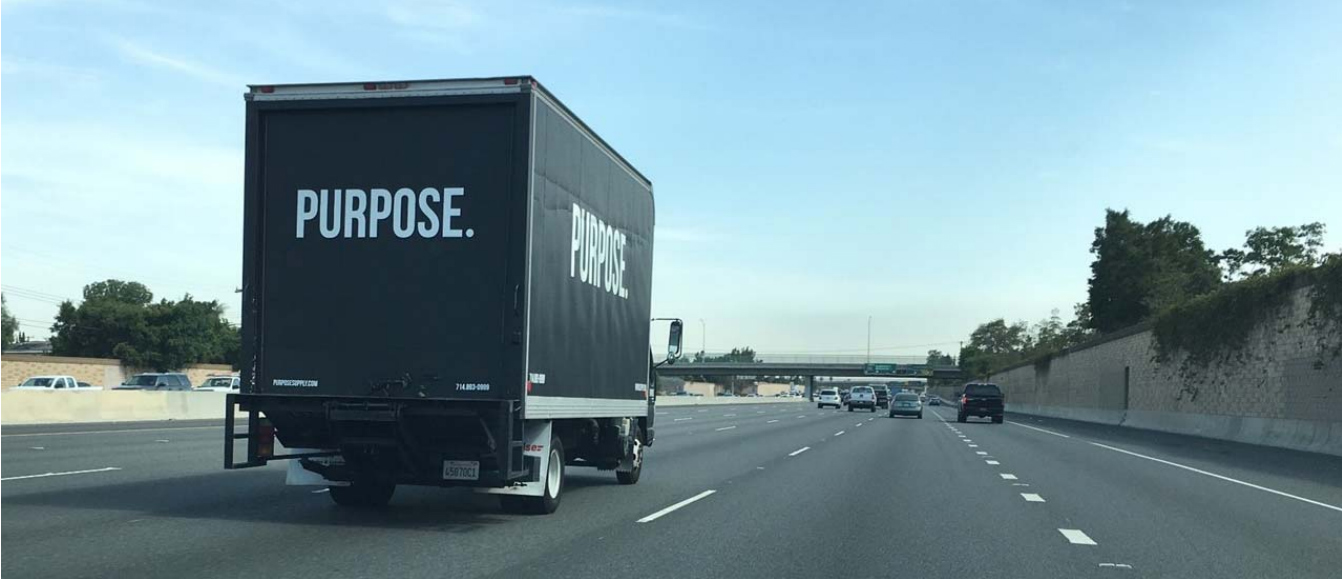Purpose – the why of things – keeps turning up everywhere. In book titles and TED talks. In movies and music. So why do we, as technology professionals, hesitate to ask our Clients “what is your project’s purpose?”
We may ask how they’re going to use a room, or a piece of equipment, or a user interface. But how often do we truly understand our Client’s business rationale for their technology investments?
Purpose-driven projects have some compelling benefits. A team of stakeholders aligned around the same priorities. A Client who emphasizes return on investment over lowest cost. The chance to develop a long-term, strategic relationship with that Client. If knowing a project’s purpose is so important, what are the barriers that hold us back?
At AVIXA’s recent Design Thinking course, participants spent a day learning how to empathize with users and nail their Client’s design challenge. Many of them reflected on the real-world barriers to exploring a project’s core purpose, given the demand for quick design solutions.
The team developing AVIXA’s User Experience Design Standard has grappled with a similar question: what’s the best way to discern a project’s purpose in the face of time and budget constraints? Here are three hurdles these groups have described, and some ideas about how you might overcome them.
Hurdle One – Because I said so. Some of us have a lingering fear that asking “why” will challenge authority. Maybe it stems from early childhood, when our third or fourth “why?” prompted a “because I said so.” As usual, there’s wisdom in childhood innocence. The five why’s – asking “why?” five times in a row – can be a powerful tool for discovering purpose.
A few years ago my firm worked with a charitable foundation to build a public gallery. Our purpose questions sprang from their simple request for two video walls, and went something like this:
Q: What’s the most important thing we need to know about these video walls?
A: They need to show photography and video at the highest quality.
Q: Why is the highest quality important?
A: The quality needs to be so good that the world’s most renowned photographers will be proud to display their work here.
Q: Why is it important to attract world class photographers?
A: We want to connect photographers and visitors through powerful imagery and stories, told in the photographers’ voices.
Q: What will happen when that connection is made?
A: Visitors can see the world through a different lens, and feel motivated to make positive change.
This conversation moved from “two video walls” to “change the world” with just four questions. The Client’s purpose was a guiding light for the project team, which soon included three respected photographers. They became our advocates for a world class AV solution that displayed 66,000 photographs to 115,000 visitors in the first two years.
Hurdle Two – It’s too late, baby. Yes, sometimes we get the last seat at the project table. The call for help may even come when a new space is finished – all except the AV system. That doesn’t mean it’s too late to understand a Client’s purpose. In fact, that exploration may just land you a bigger, better project than the one at hand.
Last year a colleague was invited to bid on several conference rooms where the technical requirements were already defined. After doing some research, he took this opportunity to ask questions about how the Client’s aggressive growth would affect their peoples’ ability to collaborate. As his questions became more strategic, he was introduced to a group of senior managers. These executives finally confessed they didn’t have a technology strategy to match their growth trajectory, and invited his firm to craft that strategy. What began as a low bidder contest became a negotiated consulting contract.
It hasn’t ended there. After interviewing end users, observing meetings and hosting workshops to understand peoples’ requirements, the project team presented their insights. They proposed several purpose-driven initiatives to the Client, and implementation contracts followed. The project became a program that’s now on a multi-year path to completion. It wasn’t too late to ask “why?” In fact, our colleague’s timing was perfect.
Hurdle Three – Not in my contract. Don’t you love to work with people who get the job done, no matter what? “Not in my contract” is not in their vocabulary. Clients buying a result, not a list of parts and tasks, are likely to pay based on long-term value instead of short-term deliverables. Once you know a project’s purpose, it’s much easier to negotiate a fair price for delivering results. Plus, your accountability builds trust and respect – the foundation for lasting Client relationships.
In 1998 my firm took on a challenge that felt fairly risky: cutting a large public board’s meeting time in half. Their complex voting rules needed manual calculations that stopped meetings, and raised suspicion about how votes were cast. Board members, staff and the public wasted hours of time every month they met. We took a big gulp and took the job, believing we could meet their goal by automating their meeting process.
We were lucky to have a Board Chair who helped us define the problem and happily tested our prototypes. During the first mock “board meeting” the software performed as expected, but the hardware froze when 50 people cast their votes at once. Heart attack.
We assured the Board Chair the problem could be solved, and quickly redesigned the system with twice as much equipment. Did that change impact our profit? Of course. But we also learned that accepting accountability for results, no excuses, builds huge credibility. In twenty years that agency’s Board members have saved over 5,000 days of meeting time, and we still support them with system upgrades and multi-year service agreements.
The benefits of purpose-driven projects are compelling, both for you and for your Clients.
Stakeholders aligned around a common vision. Contracts based on long-term value versus short-term cost. Lasting Client relationships. And, if that’s not enough, most of us are deeply satisfied to know why our work is important. Does leading with purpose take more time at the beginning? Yes. Does it feel risky? Sometimes. Is the result worth it? Absolutely. The next time you start a project, I hope you’ll leap the hurdles and give “why” a try.
©2019 Lisa Perrine




